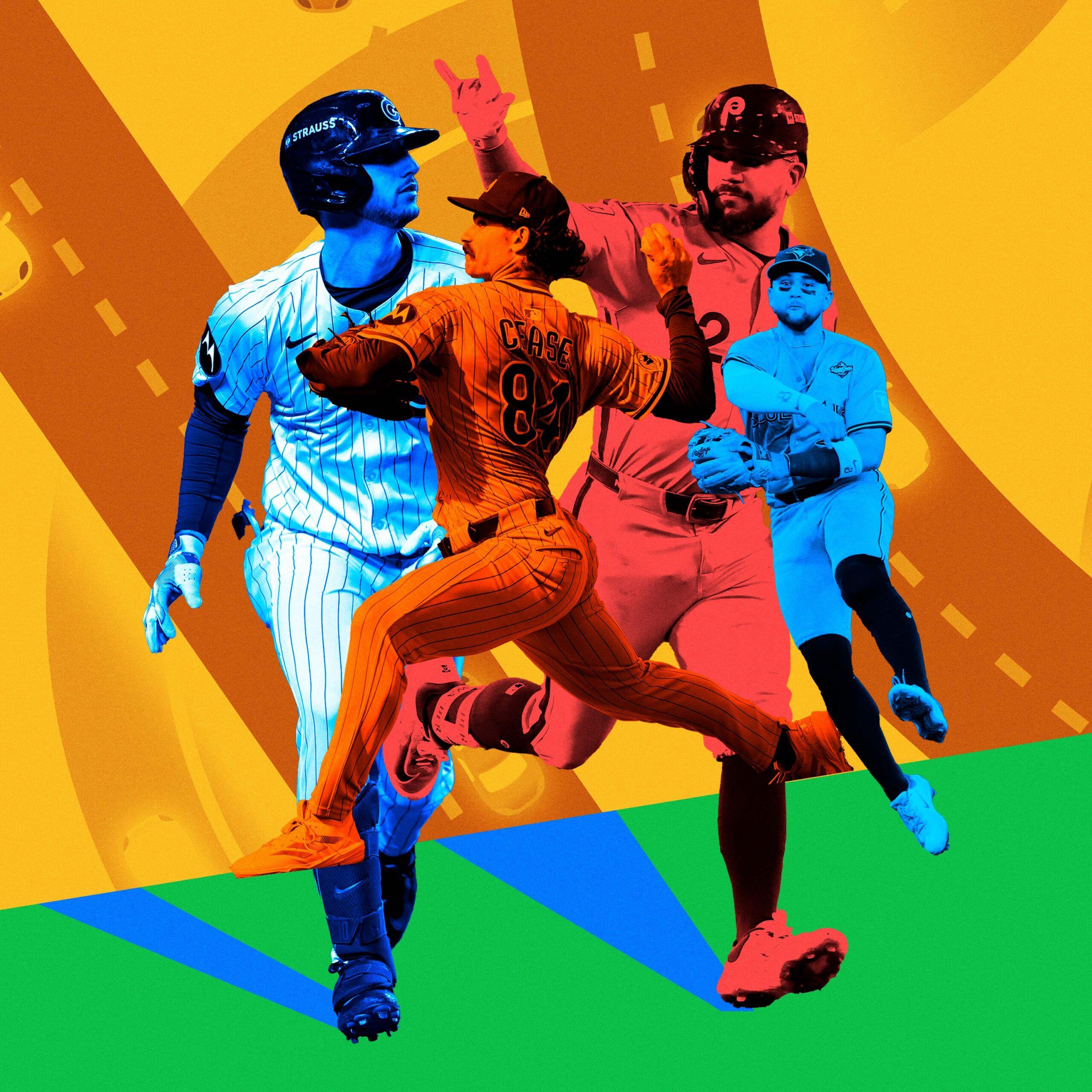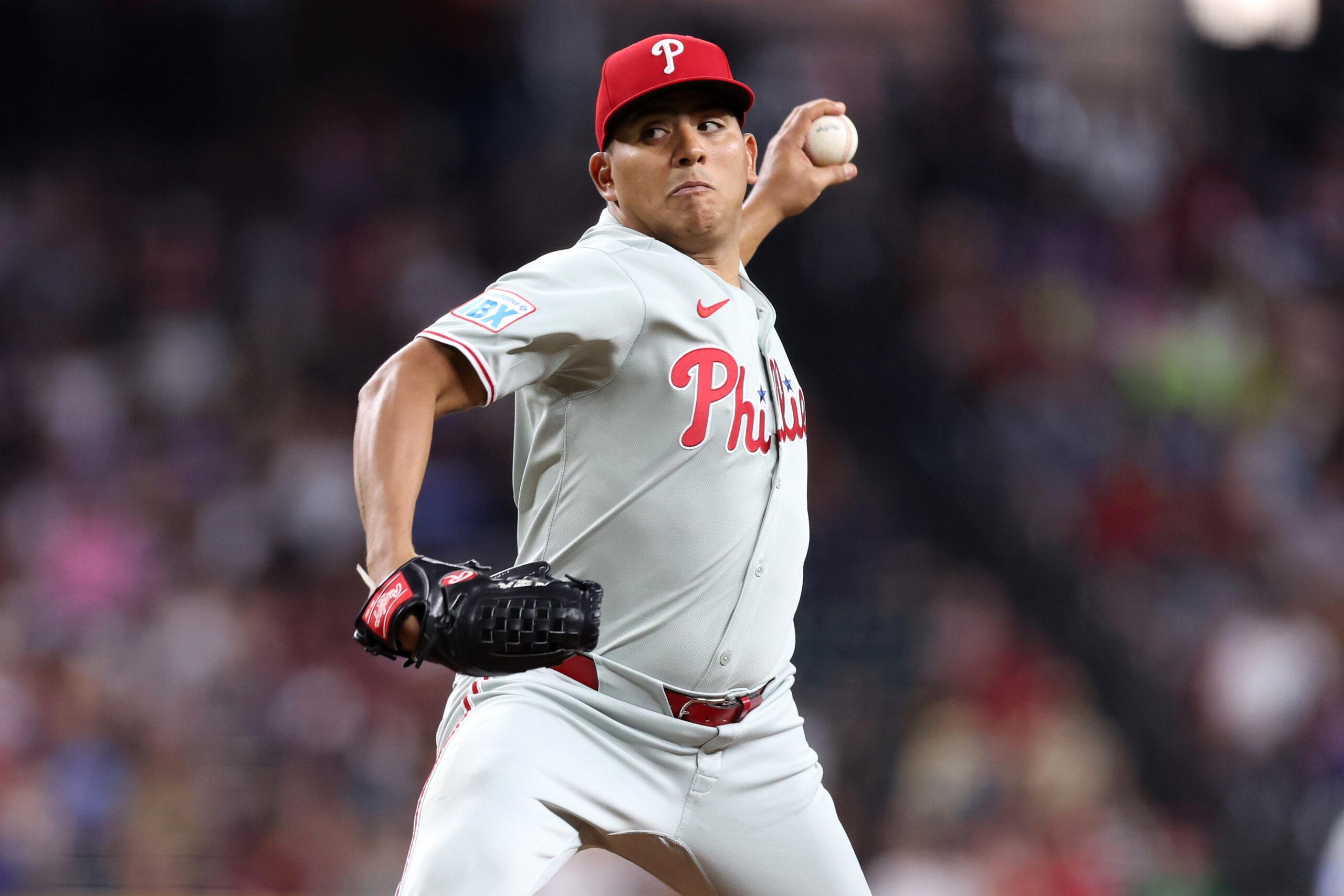
Another hot stove season is here, which means it’s time once again for baseball’s favorite tradition—pretending the stove is hot, even when the pilot light is struggling to ignite it properly. MLB free agency is traditionally more of a lukewarm simmer compared to the offseasons of the NFL and NBA.
Even still, it’s worth turning on those tweet notifications for your favorite baseball newsbreakers. Otherwise, you’d have missed that the Mariners handed out the first multiyear contract of the offseason on Sunday when they signed first baseman Josh Naylor to a five-year deal worth $92.5 million.
Seattle nabbed Naylor at the trade deadline, and he was a key contributor in their division title and playoff run. His metrics may not stand out on a Baseball Savant chart, but his excellent eye and ability to put bat to ball were very much needed in a strikeout-prone Mariners lineup.
Naylor isn’t a Tier 1 headliner, but his signing helps set the early contours of this market. If teams are staking long-term money on players like him—guys who are contact heavy, reliable, and still in their primes—that could shape how the rest of the free agent tiers unfold over the next few months.
And that’s where The Ringer’s 2025-26 MLB free agency tier list comes in. We’ll take a level-by-level look at the main prize of the winter, the players who fit somewhere in the middle, and the guys who could go down as undervalued options.

The Market Maker
Kyle Tucker, OF (28)
It’s hard to knock the consistency of Tucker. Few players in the sport have been as reliably productive over the past half decade, and he’s poised to be paid accordingly. Tucker has produced at least 4.2 fWAR every season since 2021. His year-over-year steadiness and well-rounded skill set mean there’s a tendency to label him as a “high-floor” guy.
Tucker posts above-average walk and strikeout rates, plays generally reliable defense, and has hit 20 or more home runs in five straight seasons. Even his relative downturn in 2025 came with an asterisk, courtesy of the June hand fracture that rattled his normally steady production.
For all the things Tucker does well, his ceiling is still something of an enigma. He doesn’t have one singular, elite trait—no highlight-reel exit velocity, no elite sprint speed, and his prior Gold Glove–level defense has declined a bit. He’s a star because he’s good at everything, not dominant at one thing. And that’s where the risk exists. If his quality of play slips even a little as he moves into his 30s, the megadeal he’s about to sign could take on some water very quickly.
For now, though, Tucker remains the marquee free agent on the market. His deal is what most people will argue about—the number of years he should get, the amount of dollars he should earn. He won’t be the one to make a ton of flashy plays, but he’s consistent over the long grind of an MLB season, and maybe an MLB career.

The “Are You Sure?” Tier
Bo Bichette, INF (27)
Kyle Schwarber, DH (32)
After Tucker, the next two top hitters come with significant risks in the medium term. Both are likely to receive four-year contracts at a minimum. Fresh off his World Series heroics, Bichette might be the riskiest big-ticket bet of the entire offseason. The Athletic projected his contract would be for seven years and $189 million, a number that assumes the hitter from 2021-23 is still lurking somewhere in there. Bichette’s ability to put the barrel on the ball on almost any pitch remains elite, but his lower-body injuries from 2024 and 2025 have clearly taken a toll on him.
His speed has dipped, his defense cratered over the past year, and the margin for error in his offensive profile is thinner than most people realize. Bichette has never been a true power hitter—just someone who hits more homers than the average middle infielder—and his below-average bat speed and high chase rate raise real questions about how long the power will stick.
When he’s on the field, Bichette is almost guaranteed to hit for average. The real uncertainty is everything around that. What position will he play? How well will he play it? And how long will his offense be enough to outweigh the erosion of the tools that made him a star in the first place?
Schwarber’s profile, meanwhile, makes him the perfect embodiment of modern baseball. He has a superb eye and walks a ton, and he’s completely abandoned the idea of playing the field. Most importantly: He hits dingers. Since the start of 2021, only Shohei Ohtani and Aaron Judge have hit more home runs than Schwarber. He’s the ultimate slugger, and he even made real progress against lefties on his way to a career year in 2025. Few hitters in the league swing the bat faster or hit the baseball harder, and those are the types of traits you’d feel comfortable betting on for at least a couple more seasons.
But as an extremely limited fielder, Schwarber comes with a big caveat. Any team that signs him is effectively committing to a full-time designated hitter for the next four-plus years. The Phillies have lived that reality for two and a half seasons and remain the favorites to bring him back, but even for them, it’s a bold bet to stack him onto an already aging core. It’s less a question of what Schwarber will give you and more a question of whether your roster can absorb his very specific shape.

The Schrodinger’s Stars Tier
Alex Bregman, INF (31)
Pete Alonso, 1B (30)
Cody Bellinger, OF (30)
All three players in this tier have demonstrated incredible peaks in their careers, but those highs appear to be in the past.
Bregman’s two best seasons came in 2018 and 2019, when he produced a combined 16.2 fWAR, second only to Mike Trout. His year-by-year fWAR has declined every season since 2021, and while he remains a reliable defender at third base with excellent plate discipline, his hitting quality won’t improve in his 30s. Bregman should remain a decent-to-good hitter for a few more years, but his superstar days are probably behind him.
Bellinger won NL MVP in 2019 but hasn’t been able to find the same level of power in his bat since. He’s recovered from almost unplayable levels in 2021 and 2022 to produce three consecutive quality seasons, and he’s proved he can be an excellent corner outfielder, even if he’s not great in center anymore. Bellinger will probably get the longest contract of the three because of the combination of his age and athleticism.
The Mets were not willing to give Alonso a long-term contract last offseason, which is part of the reason he finds himself in this tier. You can look at his production and sell yourself on the idea that he’s a star player worth investing in long term. He certainly has the power to warrant being in the middle of any championship-contending lineup. But like Schwarber, you have to understand what you’re committing to. While Alonso was durable and played every game in 2024 and 2025, he was one of the worst fielders in baseball at first base and will probably be a full-time designated hitter by 2027. He’s loved by the fans in New York because of his late-2024 heroics and his production last season, but the front office seems to view him differently.

The “Good Pitching Is Hard to Find These Days” Tier
Framber Valdez, LHP (31)
Dylan Cease, RHP (29)
Ranger Suárez, LHP (30)
Zac Gallen, RHP (30)
Valdez struggled down the stretch in 2025—a controversy arose when he intentionally crossed up his catcher—but he remains the top pitcher on the free agent market. Valdez has pitched the fifth-most innings in baseball since 2021, establishing himself as a top-of-the-rotation stalwart. He also has the highest ground-ball rate of any starting pitcher in baseball at 61.6 percent. Valdez has never relied on elite velocity or dominant strikeout rates to pitch effectively, so you could bet on his skills to translate into his mid-30s.
Cease’s year-to-year variance is as high as that of any top-end starter in MLB. Based on his 2022 and 2024 seasons, you’d consider him one of the 10 best starters in the game. But if you watched odd-year Cease, you’d be left pulling your hair out in frustration.
Dylan Cease ERA by Year
One certainty with Cease is the punch-outs: He has 86 more strikeouts than any other MLB pitcher since the start of 2022. What happens with everything else—mostly how he refines his command and limits hard contact—will define how his contract ages. Cease will certainly get paid, but if Padres pitching coach Ruben Niebla couldn’t get a consistent ace out of Cease, the yo-yo version might just be who he is.
Suárez is a modern-day finesse pitcher. He has a 1.48 ERA in 42.2 playoff innings despite his fastball rarely reaching 93 mph. Even last season, when he was regularly throwing his heater at or below 90 mph, he befuddled MLB hitters and finished as one of the top pitchers in the National League. As front offices increasingly chase velocity, Suárez is the exception to the norm. He pitches with all the craft of a 15-year MLB veteran, and his deep arsenal resembles that of a pitcher in a different era of the sport.
He’s not a 200-inning-per-year pitcher, and he won’t dazzle with strikeouts. That makes him a risky bet in free agency—what happens if the fastball velocity falls further?—but Suárez has been perennially underrated his entire career.
Gallen probably wishes he had hit free agency one year earlier. The Arizona right-hander saw a drop-off in virtually every pitching metric in 2025. His ERA jumped more than a full run, and it was accompanied by fewer strikeouts, more walks, and more homers. Will there be a front office that treats the down year in 2025 as an aberration? Or will he be viewed as a diminished pitcher who missed his chance to fully cash in on an incredible 2022-24 run?

The True Wild Cards
Munetaka Murakami, INF (25)
Tatsuya Imai, RHP (27)
Eugenio Suárez, 3B (34)
Michael King, RHP (30)
Shota Imanaga, LHP (32)
Because 2025 became the year of the splitter in baseball, there will be considerable interest in Japanese starter Tatsuya Imai. The right-hander refined his command in recent seasons in Nippon Professional Baseball and now comes to America in the wake of his countrymen Yoshinobu Yamamoto and Shota Imanaga. Imai isn’t exactly projected to be an ace like Yamamoto was (and has become), but he’s much younger than Imanaga, who is also a free agent this winter.
The Cubs declined to extend Imanaga on a three-year, $57 million deal, which suggests they have some doubts about how he’ll pitch the next few years. Imanaga now hits the free agent market with an interesting question attached to him. Did the Cubs know something or see something in him that they didn’t like? Or is this a cost-cutting opportunity? Chicago is short on quality pitching, and it hampered them in the playoffs this October, which makes the decision to cut bait all the more interesting. Imanaga did have a serious home run issue in 2025, and his strikeout rate dipped by 4.5 percentage points.
While Imai is the top Japanese pitcher on the market, Murakami is the top Japanese hitter. His exit velocities in Japan were seriously impressive, and his raw power should translate to the big leagues immediately. His defensive limitations at third base and his lack of contact hitting could become issues for him, though, as he adjusts to the higher level of MLB pitching and defense.
Eugenio Suárez was seen as the biggest prize going into the trade deadline, but he ended up not even being the Mariners’ best acquisition. (That would be Naylor.) The second half of his 2025 season is a cautionary tale for whichever front office offers a multiyear deal to the 34-year-old slugger. Suárez had a .682 OPS during his time in Seattle, and he was subpar as a third baseman, too. At this point in his career, he’s best deployed as a designated hitter who can occasionally play third base. He’ll probably hit a bunch of dingers again, but if it’s just dingers with limited on-base skills and defense, that profile will get risky in a hurry.
Like Gallen, King hit free agency one year too late. An injury-riddled 2025 season meant that he threw only 73 innings. It’s not a great look for King that all of these injuries came immediately after his first full season as a starter in 2024. King was one of the best starters in baseball down the stretch run of the 2024 season, but he hasn’t proved he can put together back-to-back healthy seasons as a starter. He’s one of the top injury risks of the winter, but he also has the top-end stuff to be a quality second starter. I suspect his deal won’t be long, but as mentioned above, good starting pitching is hard to find these days.
Honorable Mentions
Relievers can be tricky to assess correctly, but there are three top-tier pitchers on the market. Edwin Diaz is a dominant closer with few concerns and red flags. Devin Williams and Ryan Helsley (look away, New York baseball fans) have nasty stuff and will generate plenty of market interest. At this point, so many people have written about how Williams and Helsley are obvious buy-low reclamation candidates that this discourse has become the front-runner for “most overused commentary of the offseason.”
Naylor was the first major domino to fall this offseason, and without a Juan Soto–like figure sucking up all of the oxygen at the top of the market, we could see the stove heat up earlier than usual. Overall, it’s a deeper free agent class than last winter’s, but it’s not without its fair share of land mines, wild cards, and risks. May the best GM win.



